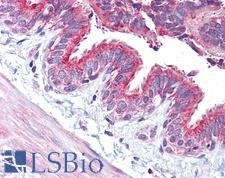Login
Registration enables users to use special features of this website, such as past
order histories, retained contact details for faster checkout, review submissions, and special promotions.
order histories, retained contact details for faster checkout, review submissions, and special promotions.
Forgot password?
Registration enables users to use special features of this website, such as past
order histories, retained contact details for faster checkout, review submissions, and special promotions.
order histories, retained contact details for faster checkout, review submissions, and special promotions.
Quick Order
Products
Antibodies
ELISA and Assay Kits
Research Areas
Infectious Disease
Resources
Purchasing
Reference Material
Contact Us
Location
Corporate Headquarters
Vector Laboratories, Inc.
6737 Mowry Ave
Newark, CA 94560
United States
Telephone Numbers
Customer Service: (800) 227-6666 / (650) 697-3600
Contact Us
Additional Contact Details
Login
Registration enables users to use special features of this website, such as past
order histories, retained contact details for faster checkout, review submissions, and special promotions.
order histories, retained contact details for faster checkout, review submissions, and special promotions.
Forgot password?
Registration enables users to use special features of this website, such as past
order histories, retained contact details for faster checkout, review submissions, and special promotions.
order histories, retained contact details for faster checkout, review submissions, and special promotions.
Quick Order
PathPlusTM CCNE1 / Cyclin E1 Antibodies
CCNE1 (Cyclin E1) belongs to the highly conserved cyclin family, whose members are characterized by a dramatic periodicity in protein abundance through the cell cycle. It forms a complex with and functions as a regulatory subunit of CDK2, whose activity is required for cell cycle G1/S transition. This protein accumulates at the G1-S phase boundary and is degraded as cells progress through S phase. Overexpression of this gene has been observed in many tumors, which results in chromosome instability, and thus may contribute to tumorigenesis. This protein is involved in the phosphorylation of NPAT protein, which participates in cell-cycle regulated histone gene expression and plays a critical role in promoting cell-cycle progression in the absence of pRB. In immunohistochemistry, CCNE1 has variable levels of nuclear and cytoplasmic positivity in most tissues throughout the body.
References: The UniProt Consortium. Nucleic Acids Res. 47: D506-515 (2019); Nucleic Acids Res. 2016 Jan 4;44(D1):D733-45, PMID:26553804;
3 PathPlusTM Antibodies



☰ Filters
Products
Antibodies
(3)
Type
Primary
(3)
Target
CCNE1 / Cyclin E1
(3)
Reactivity
Human
(3)
Mouse
(2)
Rat
(1)
Application
IHC-P
(3)
WB
(2)
IF
(2)
Peptide-ELISA
(2)
Host
rabbit
(3)
Product Group
PathPlus Cancer
(3)
Isotype
IgG
(2)
Clonality
polyclonal pc
(3)
Format
Unconjugated
(3)
Epitope
C-Terminus
(1)
aa361-410
(1)
aa91-140
(1)
Publications
No
(3)

Cancer
CCNE1 / Cyclin E1 Rabbit anti-Human Polyclonal (aa91-140) Antibody
Mouse, Rat, Human
IF, IHC-P, Peptide-ELISA, WB
Unconjugated
50 µl/$375

Cancer
CCNE1 / Cyclin E1 Rabbit anti-Human Polyclonal (aa361-410) Antibody
Human
IF, IHC-P, Peptide-ELISA, WB
Unconjugated
50 µl/$375

Cancer
CCNE1 / Cyclin E1 Rabbit anti-Human Polyclonal (C-Terminus) Antibody
Mouse, Human
IHC-P
Unconjugated
250 µl/$375
Viewing 1-3
of 3
product results











